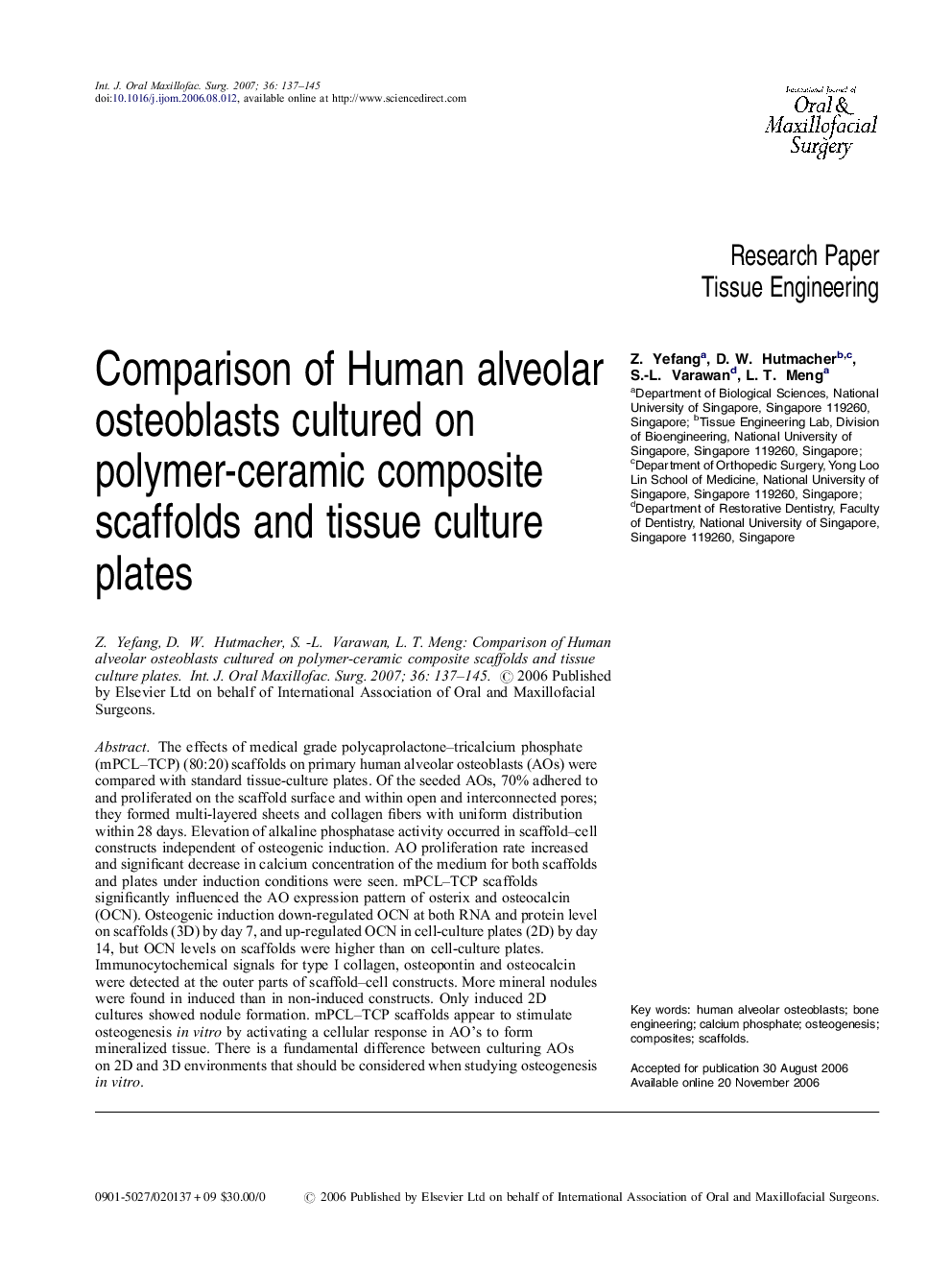| Article ID | Journal | Published Year | Pages | File Type |
|---|---|---|---|---|
| 3134194 | International Journal of Oral and Maxillofacial Surgery | 2007 | 9 Pages |
The effects of medical grade polycaprolactone–tricalcium phosphate (mPCL–TCP) (80:20) scaffolds on primary human alveolar osteoblasts (AOs) were compared with standard tissue-culture plates. Of the seeded AOs, 70% adhered to and proliferated on the scaffold surface and within open and interconnected pores; they formed multi-layered sheets and collagen fibers with uniform distribution within 28 days. Elevation of alkaline phosphatase activity occurred in scaffold–cell constructs independent of osteogenic induction. AO proliferation rate increased and significant decrease in calcium concentration of the medium for both scaffolds and plates under induction conditions were seen. mPCL–TCP scaffolds significantly influenced the AO expression pattern of osterix and osteocalcin (OCN). Osteogenic induction down-regulated OCN at both RNA and protein level on scaffolds (3D) by day 7, and up-regulated OCN in cell-culture plates (2D) by day 14, but OCN levels on scaffolds were higher than on cell-culture plates. Immunocytochemical signals for type I collagen, osteopontin and osteocalcin were detected at the outer parts of scaffold–cell constructs. More mineral nodules were found in induced than in non-induced constructs. Only induced 2D cultures showed nodule formation. mPCL–TCP scaffolds appear to stimulate osteogenesis in vitro by activating a cellular response in AO's to form mineralized tissue. There is a fundamental difference between culturing AOs on 2D and 3D environments that should be considered when studying osteogenesis in vitro.
